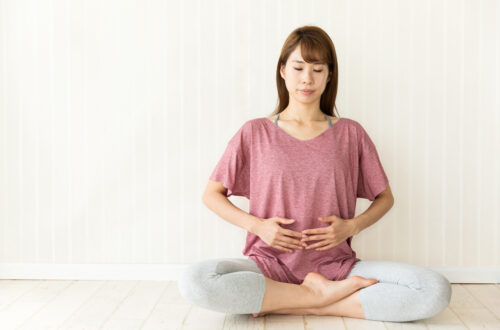How’s Your Bone Density and Bone Health?
As a woman of a “certain age” I am starting to wrestle with issues of changes in body composition and bone density. In the United States, routine coverage for bone density screening begins at age 65 in women and 70 in men. However, healthcare providers might recommend it for younger people for a few reasons, such as if they:
- Had multiple broken bones
- Lost height
- Have hormone fluctuations
- Take certain medications, such as prednisone, on a regular basis.
 Bone density can be measured in a number of ways. There are regular X-rays, dual-energy x-ray absorptiometry (DEXA or DXA scans), or a specific CT scan that focuses on the density of the lumbar spine and hips. But a challenge we face is that by the time we reach the age that routine screening is performed, it is much more difficult to reverse osteopenia (thinning bone) than it is when we’re younger, at age 50 for example. Peak bone density occurs around age 30. In order to keep your bones “dense” and thus less likely to break, it is important to “challenge” the bone through weight lifting or gravity-bearing sports like running. The sooner we know we need to start or increase this activity, the better.
Bone density can be measured in a number of ways. There are regular X-rays, dual-energy x-ray absorptiometry (DEXA or DXA scans), or a specific CT scan that focuses on the density of the lumbar spine and hips. But a challenge we face is that by the time we reach the age that routine screening is performed, it is much more difficult to reverse osteopenia (thinning bone) than it is when we’re younger, at age 50 for example. Peak bone density occurs around age 30. In order to keep your bones “dense” and thus less likely to break, it is important to “challenge” the bone through weight lifting or gravity-bearing sports like running. The sooner we know we need to start or increase this activity, the better.
Checking your bone health
So, in my effort to channel Peter Attia, MD, and prepare myself for my centenarian decathlon, and because my grandmother had a hip fracture, which led to a rapid decline, I decided to find out early if I was at risk for osteopenia or osteoporosis (severe bone loss). It is very common for people who break a hip or fall to enter a spiral of worsening health issues. One recent study showed that there is a 3-fold increased risk of death after someone has a hip fracture, compared with the general population.
Your bone density is measured by T-score. According to the Mayo Clinic, this is your bone density compared to “what is normally expected in a healthy adult of your sex. Your T-score is the number of units, called standard deviations, that your bone density is above or below the average.” The World Health Organization (WHO) definition of osteoporosis is a T-score less than -2.5. The definition of osteopenia is a score between -1 and -2.5. A normal bone density score is between -1 and 2.
Choosing the method
A regular X-ray of a long bone may show a suggestion of osteopenia, but does not allow for the detail from a CT scan or DEXA scan. The CT scan requires more radiation exposure and is typically performed at a radiology center. A DEXA scan can be performed by a technician with less training than a radiology technician. It also does not have the same degree of radiation exposure. Given that research, I decided to take advantage of a deal on Groupon to determine where I stood on two fronts with the DEXA scan, not only my bone density, but also to determine my muscle and fat distribution. (Again one of the “joys” of aging is the change in your metabolism and the redistribution of fat that can occur in some individuals).
We know that people who have a greater distribution of their fat in an “apple” fashion (versus pear) are at higher risk for coronary artery disease. Apple-shaped individuals have increased fat distribution at the waistline versus people who are pear-shaped, who have increased fat distribution at the hips and buttocks. We also know that increased adiposity (fat distribution) in an apple distribution has also been associated with type 2 diabetes.
Determining body fat

There are many different ways to determine adiposity, some more accurate than others. Inexpensive though less accurate measurements include weight, BMI (weight and height needed), waist circumference, and waist to hip ratio. More accurate, though more expensive methods, include hydrostatic weighing or air displacement (like the Bod Pod), which can tell you body fat percentage, but not location of the body fat. Bioimpedance or “smart scales” use an electrical signal to determine your body fat percentage. They are not recommended for individuals with pacemakers and their accuracy can vary widely.
The DEXA scan can show not only the body fat percentage, but also the distribution of muscle and fat. Some patients may use regular DEXA scans as a method of tracking success with muscle gains and weight loss as they provide much more data than tracking weight and waist circumference alone. They also show where muscle or fat may have been lost or gained. This additional information can be an important signal to modify your health program if you discover that too much calorie restriction has caused more muscle than fat loss. My insurance did not cover the DEXA scan, but I felt the information was worth the equivalent of a dinner out in the Bay Area.
The good news!
My score was normal, and my weight and body fat composition were considered in the healthy range. Though, ideally, Mr. DEXA recommended that I lose 6 lbs of fat and gain 6 lbs of muscle focusing on my arms and legs. So, I guess it’s time to get some kettlebells in the TV room! Thanks for coming along as I work on deciphering my health!
Disclaimer
The information in this blog is provided as an information and educational resource only. It is not to be used or relied upon for diagnostic or treatment purposes.
The blog does not represent or guarantee that its information is applicable to a specific patient’s care or treatment. The educational content in this blog is not to be interpreted as medical advice from any of the authors or contributors. It is not to be used as a substitute for treatment or advice from a practicing physician or other healthcare professional.




